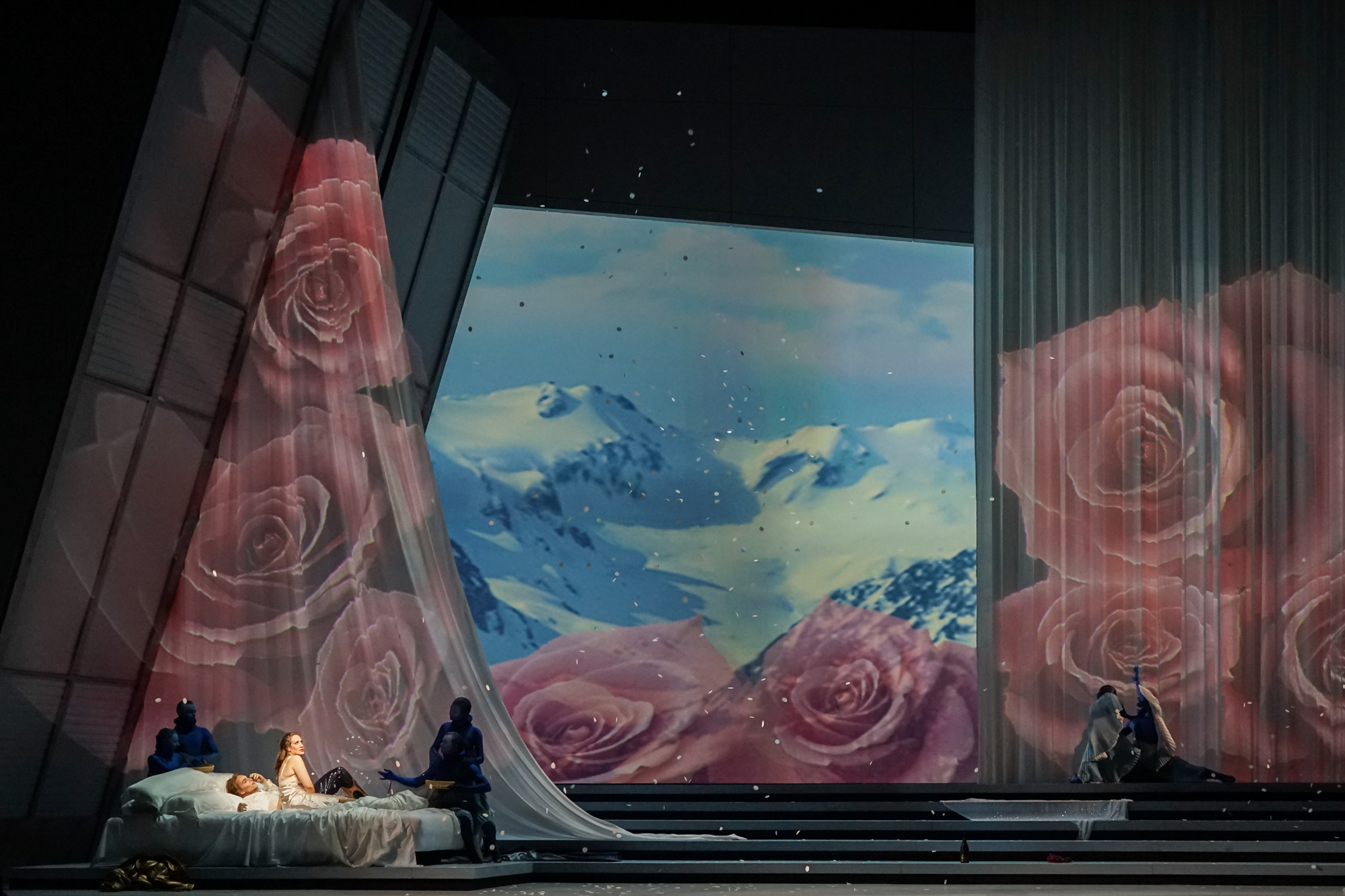Typical. I studied hard for the accessible Tosca. But I walked into Seattle Opera’s production of Semele cold. And I really could have used a little preparation; a Twitter hashtage for the production was #CanYouHandelIt. Knowing these five things ahead of time would have helped me Handel it better.
1. It’s in English.
I assumed an opera by a German composer that debuted in 1744 would be in German or Italian. I didn’t realize it debuted in Covent Garden and the librettist was an Englishman.
A lot of people have a hard time with English-language operas because they feel English is less traditional, or isn’t as cultured as Italian, or doesn’t suit the music as well. I have a hard time with English-language operas because they force me to focus on the words instead of the music. In Italian, I can connect the sound to the sentiment explained in the supratitles while ignoring the fact that the singer is repeating a single phrase literally dozens of times. In English, it doesn’t matter how many variations in the delivery, it is impossible for me to ignore that an entire aria consists solely of the sentence, “If I persist in gazing, I shall myself adore.”
But you might appreciate understanding the words and not needing supratitles.
2. There’s a countertenor.
I sat down moments before curtain and cracked the booklet for the first time, scanning the artist bios. Instantly drawn to the photo of the very attractive countertenor Randall Scotting, I leaned to my friend. “What’s a countertenor?” I asked under my breath. The lights dimmed before she could reply, but the answer came soon enough.
Imagine you’re a tourist. You’ve left your small midwestern town for the first time and you’re wandering the streets of San Francisco, ready for a night on the town. Looking for live theater, you wander in to Finocchio’s.
That’s how I felt. Shocked first, then embarrassed for being a total hick. If I closed my eyes, I couldn’t tell the difference between a countertenor and a mezzo-soprano. It’s an interesting range; women who can sing that low are rare. Men who can sing that high are even more rare.
A countertenor makes a lot of sense for the role of Semele’s human fiance Athamas. By tradition, the hero is a tenor. In a modern opera, both love interests would lazily be cast as tenors. But having a countertenor for Athamas allows a tenor Jupiter to sound more robust and manly by contrast (as a horny god should). It also highlights Athamas’ position as a refined prince and his sensitive and perceptive nature; he is the only person who recognizes that Semele’s overlooked younger sister is actually a better person than the beautiful title character.
3. It’s oratorio – sort of.
Okay, I admit it. I had to look up ‘oratorio.’ In Handel’s day, theaters had to close during Lent. Artists worked through the lean time by performing sacred dramas, named ‘oratorio’ after the location within a church that served as the stage. There were no costumes or props, the stories were usually drawn from the Bible, and they taught moral lessons. I’m sure it’s no coincidence that Semele opened the weekend after Ash Wednesday.
To a modern audience, all the references to sacred rites in the first act and the punishment of hubris and adultery in the third can seem severe and a little too moralistic – especially for opera. But Handel was a sly dog selling Semele as an oratorio. When it debuted, Lenten audiences were put off by the thematic focus on passion, the overt sexuality of the plot (including double entendres that don’t belong in a church), and the light-hearted humor of the second act. To them, it was all a little too operatic.
4. It’s high-tech.
I was reminded of scenes in period movies where a woman stands in front of an audience in a private library, trilling through scales and arpeggios. With music built around harpsichord instead of the more resonant piano, there was a lightness to the music that I don’t normally associate with opera. Combined with the opera’s roots in oratorio, it could have been very spare.
But Seattle Opera always fills in the gaps in source material to offer a full opera experience. Semele is a multimedia production. It begins with cinematic opening credits projected on the curtain. Projected clouds roil across a sky at the back of the stage; Jupiter’s face appears on a screen above the temple during the engagement sacrifice for Semele and Athamas; when Iris reports to Juno about the lovers’ affair, images of the transgressive couple that belong on paperback romance covers are displayed on the walls of Juno’s palace. Iris shoots beams of light from her high top sneakers and wears LED gloves that point lasers at each new damning photo.
5. There’s something about Stephanie Blythe.
If I didn’t know it before, I couldn’t help knowing it after. Seattle loves mezzo-soprano Stephanie Blythe. The audience was pretty quiet in the first act – I think a lot of people were trying to figure out what they had signed themselves up for.

Amanda Forsythe (left) as Iris and Stephanie Blythe (right) as Juno in Handel’s Semele.
© Elise Bakketun
But once the focus moved to Blythe, the audience went crazy. She grabbed my attention even before I knew who she was. There were plenty of other remarkable voices in the cast – for one example, soprano Brenda Rae’s Semele was as silken and sheer as the linen that adorned her pleasure palace.
I can’t identify the something extra that makes her incredible. There’s just something about Stephanie Blythe.






About the author